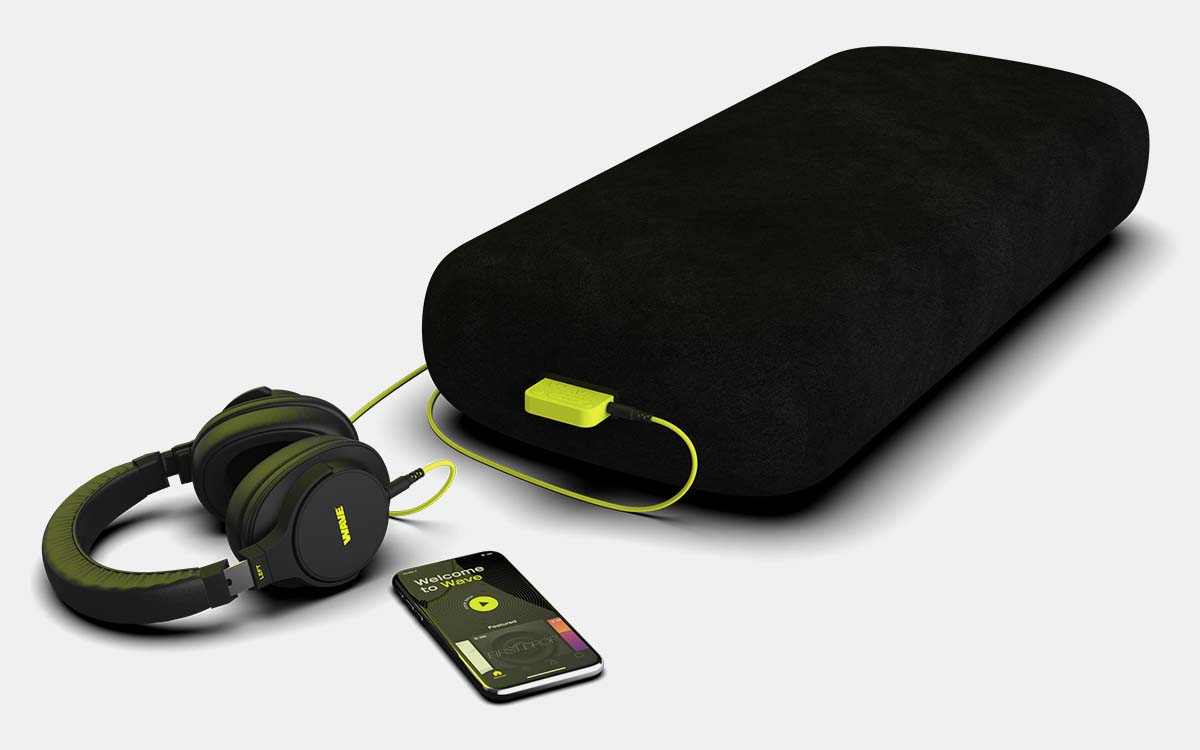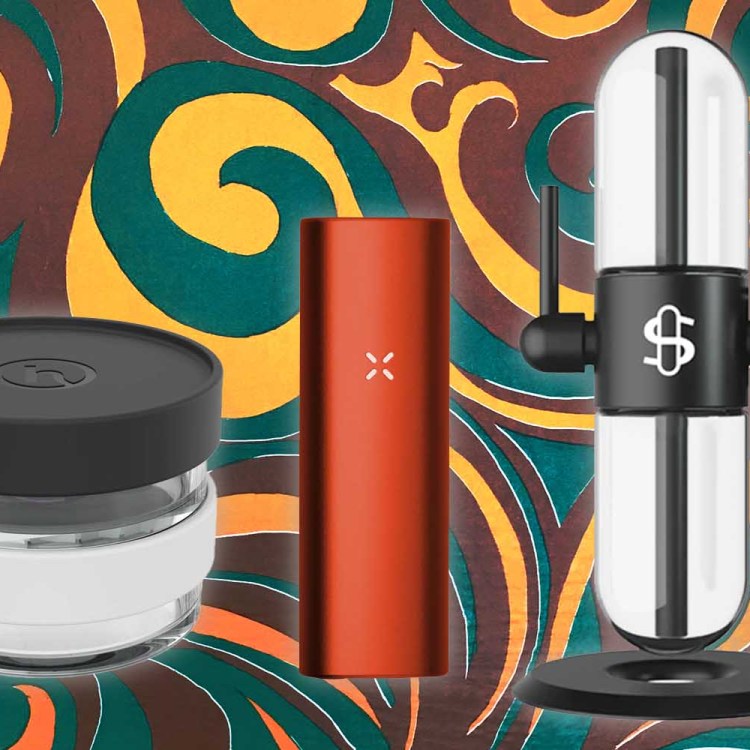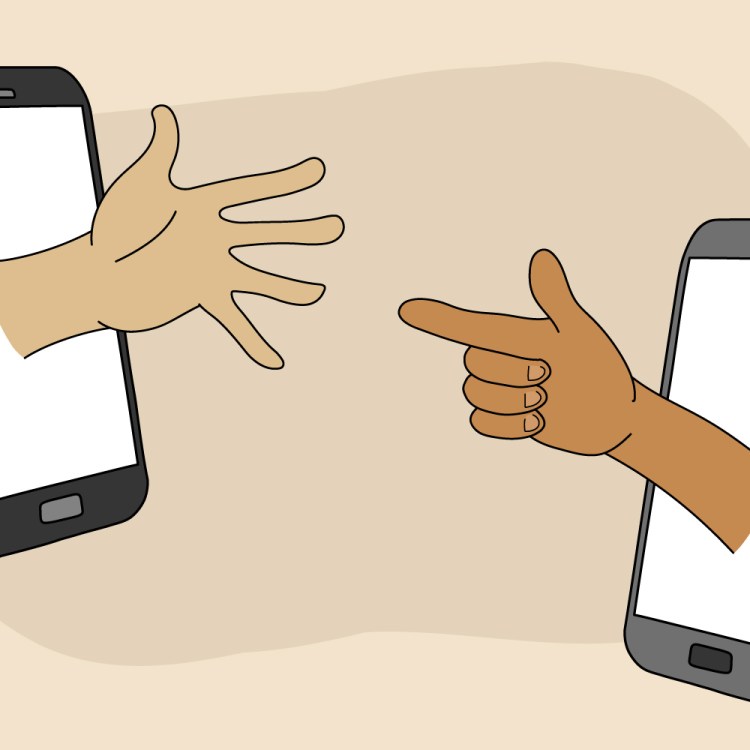We can all agree at this point that practicing meditation is a worthwhile and healthy practice with recognizable long-term benefits, similar to eating almonds or cleaning out your garage once a month. But life gets in the way of healthy practices, near constantly, and just as bowls of almonds become bags of chips, and garages become a hoarder’s paradise, it’s easier to train your eyes on a TV at the end of day and accept mindlessness than sit with your thoughts and achieve mindfulness. The stats back this up. According to data sourced in 2017, only 14% of American adults had meditated in the previous year.
Enter Wave Meditation, a service that launched this past week — which includes an app and physical kit — and wants to rebrand meditation from a wellness pseudo-chore we all skimp on to an exciting, dependable ritual we’ll want turn to every day. Unlike popular meditation apps like Calm or The Mindfulness App, Wave doesn’t rely on extended silence, vague tones or brief pep-talks for its sessions; Wave is a full-blown music player and includes a dynamic list of 10 “albums” each with anywhere from four to six 10-minute tracks that target a certain sentiment, within a larger thematic framework: for example, you might listen to “Awake” under the “Motivation” umbrella.
Wave’s primary distinguisher isn’t its music player, though. You can, after all, find any music playlist imaginable if you know how to use Spotify’s search feature. Wave also comes with a two-foot memory foam pillow called the Bolster, which connects to a pair of specialized noise-canceling headphones via a jack, and to your phone via Bluetooth. When you settle in to listen to one of the playlists, you either lay or sit your spine against the pillow, and its built-in bass rumbles right along with the music.
Wave was co-founded by Mason Levey and Brad Warsh, and it’s their second initiative together. The entrepreneurs founded Y7 Studio together in 2013, a yoga house with 13 locations across NYC and LA that calls itself a “tribe called sweat” and hosts infrared-heated classes in candlelit rooms to fast-pumping tracks from Cardi B. They’re comfortable trading in the off-beat, and Wave is no different. Naturally, we had to test the thing out for ourselves. Find our thoughts below.
Getting Set Up
There’s some slight housekeeping involved with setting up your Wave. You’ll want to immediately plug the Bolster into an outlet; the package comes with a plug, which pairs with a neon-green “chip” that pokes out from the top of the pillow. That’s also where you’ll plug in the noise-canceling headphones. While it’s charging, fire up your Wave app. You should already have a subscription from ordering your kit. Once the Bolster is reasonably charged (hold down on the power button for three seconds to monitor its charge level — more glowing blue lights is a good thing), plug in the headphones, find “Wave Bolster” in the Bluetooth list on your phone, and choose somewhere to place the mat. You’re ready to vibe.
The Experience
I initially positioned my Bolster on the couch, and regretted it about a minute in. The cushions on my couch slope a bit, and in general, it was more difficult to discern the vibrations from the Bolster when they were absorbed by the pillows. I’d recommend laying a yoga mat out on the ground, or a beach towel, and then laying atop the Bolster, like it’s a foam roller. Make sure your neck is on the pillow too, though it’s fine if your head is slightly off the edge. Quick sidebar: the Bolster feels amazing on the back. We’d gladly sleep on a mattress-sized iteration. Once comfortable, I randomly flipped through the 10 playlists on offer, before settling on “Lemonade.” It had four different tracks, ranging from 11-13 minutes, and I selected “Low 2 Lifted.” I’d had a bit of a tough day, and the title seemed promising.
It began with a woman’s voice: “We’ve all had bad days … It feels like a fog surrounds us that will never lift. In these moments, we forget that everything in life is temporary … If you’re feeling down right now, don’t sweat it.” Once she finished her little spiel, it was onto the business of breathing; she instructed me to begin inhaling and exhaling, “slow and full,” until I’d established a cadence that made sense for me.
I followed along, my eyes closed, immediately trying to remember the last time I’d let so much oxygen in. It felt good. This went on for a few moments, until, completely unannounced, the music hit. Wave describes its music as “Brian Eno meets Odesza, meets Kanye West, meets 808, meets Stranger Things.” That hitherto completely unhelpful sentence made complete sense the second its searching, planetary melodies swept through my brain and began filtering up and around the small of my back. Wave commissioned Matt Wong, a Grammy-nominated composer to develop 80 tracks (and counting) for the app, and the expertise shows. My anxiety was galloping away.
And then, to really give it the boot, the woman returned. She had a couple great lines: “Use the music to observe how your mind speaks to you when you’re feeling down. Your thoughts often work in a loop … Sadness likes feeding itself … Recall a time when you felt completely the opposite of your energy today … let this next wave of music remind you that there were hundreds, maybe millions of moments when your energy was nothing but positive.” She came back a couple times after that, and at the end to tell me to open my eyes, but most of the remaining six minutes were spent listening to the music. When it was over, I felt loose and light, and grinned at nothing in particular as I pulled the headphones off my ears.
Our Thoughts
Over the following days, I tested out a couple different tracks on Wave, from one devised for morning motivation, to another geared towards establishing a sense of presence. The music varies to fit the mood and intention — after morning one, for example, I was unnaturally eager for my commute, and similar to my experience with “Low 2 Lifted,” the voiceovers don’t spit any Yoda crap. The lines are economical, relatable, and poignant. As for the Bolster, it seems to induce some sort of blood flow to the lower back, which is an unexpected benefit from the process.
I’ve long flirted with the idea of meditation, but never been able to commit. This is the sort of kit that would have me sitting down for 10 minutes a day. The physical presence of the pillow matters (it’d be easier to ignore the app on its own), but beyond that — it was fun. It felt good. For its part, Wave has tried to gamify the app a bit; users can earn “vibes” upon completing a track and share or compare them with friends. I don’t care much for that, but I do appreciate the accountability factor. It’s important to recognize weeks we’re not giving ourselves the sort of relief Wave can bring, and register positive effects from the weeks we do give meditation a fair shake. From a technical standpoint, I’d also point out that the app works with or without the Bolster. I’ve listened to a couple tracks at work, just to calm down. And the reverse works, too. You can listen to songs from your Spotify, while laying on the Bolster. Which is wonderful.
If you’re interested in picking up the Wave Kit, head here. It’s a flat $200 to bring home the specs, and then a $9.99 monthly membership to access the playlists and tracks (which will be updated frequently). Your first month is free, and you can take the whole thing home for a 30-day test. If you don’t like it, send it back. I’m betting you’ll be too happy to do so.
Whether you’re looking to get into shape, or just get out of a funk, The Charge has got you covered. Sign up for our new wellness newsletter today.























